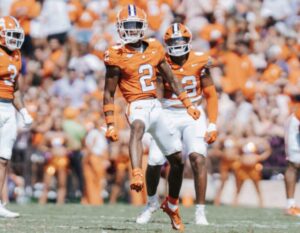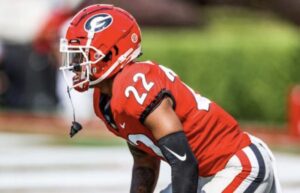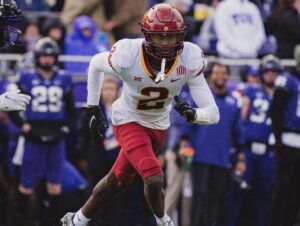At the linebacker position the Baltimore Ravens need to draft players due to impending free agency or increasing age. At wide receiver, the tale is a bit different. The Ravens need to look to the draft to fill the void caused by a lack of on-field production.
With Lee Evans, Tandon Doss, and LaQuan Williams adding very little to the offense in 2011, only veteran standout Anquan Boldin and rookie Torrey Smith made significant contributions. And, though Smith possesses elite speed and genuine homerun potential, he is still learning the intricacies of the position, a maturation process that needs to continue for the next few years. Therefore it would be no surprise to see Ozzie Newsome & Co. make additions both through the draft and free agency.
There is an attractive group of veteran free agent receivers hitting the market this offseason, featuring Vincent Jackson, Brandon Lloyd, Reggie Wayne, Dwayne Bowe, and Marques Colston, and each would be an instant starter in Baltimore and an upgrade at the position.
The 2012 draft is also rich with talented receivers, who will be available not only early, but also in the middle and late rounds as well. Justin Blackmon, the explosive Junior from Oklahoma State, and likely top 15 pick, is the only wideout that definitely will be off the board when Baltimore selects at #29 in the first round. But, there is a good chance that they will have the opportunity to consider first rate talent like South Carolina’s Alshon Jeffery (6’4” 229), Baylor’s Kendall Wright (5’10” 190), Notre Dame’s Michael Floyd (6’3” 224), or the fast rising Rutgers’ receiver Mohamed Sanu (6’2” 215).
Of this group, Wright is clearly the most explosive, possessing burst of the line and the pure foot speed to stretch defenses. However, his skill set is very similar to last year’s draftee Torrey Smith. Mohamed Sanu shares Wright’s acceleration off the ball, though he lacks the same top gear. But Sanu is a bigger bodied pass catcher, with excellent run after the catch skills, and unlike Wright, is a legitimate threat to break two or three tackles and turn a five yard quick slant into a fifty-five yard touchdown.
In the open field, Sanu has running back skills, and has actually taken a significant number of snaps at Rutgers both as a running back and as a wildcat quarterback. The knock on Sanu continues to be careless drops and inconsistent hands, especially in traffic, where his athleticism gets him in position to make the catch, but he doesn’t come down with the ball often enough.
If the Ravens are looking for a more well rounded receiver, then Notre Dame’s Michael Floyd would fit the bill. At 6’3” 224 pounds, Floyd is big and strong, with an excellent set of hands, and a well earned reputation as a playmaker. Though he gets off the line well, by being physical against corners in tight press coverage, he doesn’t’ create much separation downfield, instead using his body to shield defenders from the ball. Upon completion, Floyd lacks the acceleration to run away from defensive backs, but he is a punishing runner, with a nose for the end zone. He did have his share of off-field indiscretions, resulting in him missing multiple games throughout his career, and, accordingly, the prospect interview process will go a long way in determining where he will be drafted.
Perhaps the most intriguing prospect for the Ravens is South Carolina’s Alshon Jeffery, who is a huge, big bodied target, with an enormous catching radius. Jeffery is, unquestionably, a freakish athlete, with 4.5 speed and elite leaping ability and body control. He doesn’t explode off the snap, yet he gets on cornerbacks quicker than they expect, and, once he gets his long stride going, he can threaten the defense in the deepest part of the field. He never consistently gains horizontal separation from defensive backs but he does possess the rare ability to vertically separate.
Even when he’s not “open,” the quarterback can throw the ball high, and, more often than not, Jeffery will come down with the pigskin. He has huge, soft hands, catches the ball away from his body, and is a load to bring down in the open field. Questions linger about Jeffery largely because he failed to produce impressive numbers during the 2011 season, but the lack of production can be attributed to double teams on the perimeter, and the poor quality of quarterbacking at South Carolina.
Gamecock starting QB, Stephen Garcia was dismissed from the team at midseason, and replaced with freshman Conner Shaw, who required a significant scaling back of the offense, which hurt the entire passing game considerably. As a result, Jeffery’s draft stock has taken a hit, and there is a good chance that he could be available at #29.
For the Ravens, Jeffery’s most significant value may be as a first rate red zone target, where he is a beast, too physical for cornerbacks, and too athletic for safetys or linebackers to handle. It is not an overstatement to say that there are very few wide receivers currently in the NFL who can go up and get the back corner fade like Alshon Jeffery, and this talent would nicely complement the pure speed of Torrey Smith and the power and run after the catch ability of Anquan Boldin. As such, Baltimore will have to think long and hard about the importance of filling other team needs if Jeffery is available when they’re on the clock in round one.
Should the Ravens choose to hold off on drafting a receiver until later in the draft, the depth at the position may keep other big, talented catchers of the ball, like Wisconsin’s Nick Toon (6’3” 220), Iowa’s Marvin McNutt (6’4” 215), and Georgia Tech’s Stephen Hill (6’5” 206), on the draft board into the middle or late rounds. Hill is another in a line of big Yellow Jacket wideouts to enter the draft in recent years, including Demaryius Thomas and Calvin Johnson. However, Hill is raw and relatively inexperienced due to Georgia Tech’s run oriented offense, and he isn’t as athletically gifted as Thomas, or especially Johnson. But Hill runs in the low 4.5 range, has the frame to get stronger, and really tracks the ball well in the air. As such, he will need two or three years of seasoning, but has the most upside of any receiver likely to be available in rounds four through 6.
Like Hill, Iowa’s Marvin McNutt is far from a polished product, but McNutt is a sturdier built player, more apt to use his body to out-position defensive backs than to use speed in an attempt to run by them. McNutt came to Iowa as a quarterback, and is still learning how to play wide receiver. He lacks burst at the snap, but possesses strong hands that he effectively uses to get a clean release. Once in route, he’s a smooth runner, who shows an ability to recognize and sit down in soft pockets of zone coverages. He shows the capability to fight for balls in traffic, though he does catch too many passes against his body. He looks like an eventual starter and a solid mid-round pick.
The most polished receiver of this group is Nick Toon, and, in all likelihood, he’ll be the first one selected, probably in round three, or even late round two. Toon is a natural receiver, running crisp routes, with good short area quickness, and displaying excellent ball skills. He has average speed, but shows real savvy, setting up defensive backs with subtle head and shoulder fakes, and knowing when to slow a route down to take advantage of available throwing windows. Despite talent and technical skill, Toon failed to post impressive numbers for any of his years at Wisconsin, largely due to nagging injuries, which may hurt his stock, and Wisconsin’s reliance on the running game. He is an accomplished blocker, and, more than likely, will post better receiving numbers as a pro than he did as a collegian.
As a late round flier, watch for East Carolina’s Lance Lewis , who measured 6’1” 209 pounds at the East/West Shrine, where he was an unsuspected surprise. Lewis plays bigger than his height would suggest, tracking passes well in the air, and using plus leaping ability to go up and get the ball at its highest point. He’s a long strider who lacks explosiveness but he is a genuine red zone target, notching 8 touchdowns in 2011 in just 9 games, before being sidelined by nagging knee and ankle injuries. Because of the injuries and his level of competition at East Carolina, Lewis is likely to fall further in the draft than his talent warrants, and should be on the Ravens’ late round radar.








